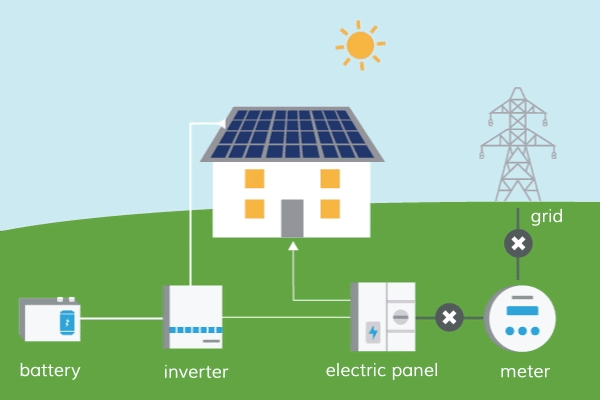OFF – GRID SYSTEM
An off-grid solar system is a self-sustaining and independent energy solution that generates electricity from sunlight using solar panels without being connected to the public power grid. This setup is ideal for remote or rural areas where grid connectivity is unavailable or costly. Off-grid systems typically incorporate energy storage in batteries, allowing excess solar power generated during sunny periods to be stored for use when the sun is not shining, such as during the night or on cloudy days.
In an off-grid solar system, solar panels capture sunlight and convert it into direct current (DC) electricity. The DC electricity is then sent to charge batteries through a charge controller, which regulates the charging process to prevent overcharging. The batteries store the energy for later use, acting as a reservoir to supply power during periods of low solar energy production.

To make the electricity usable for household appliances and electronic devices, an inverter is employed to convert the DC electricity stored in the batteries into alternating current (AC). The AC power can then be distributed throughout the off-grid property to meet the energy demands of the users.
Off-grid solar systems offer several advantages, including energy independence and reduced reliance on traditional energy sources, making them an environmentally friendly option. However, they also require careful planning and sizing to ensure they can meet the energy needs of the property throughout the year. Additionally, off-grid systems may involve higher upfront costs due to the inclusion of energy storage components like batteries, but they can provide long-term cost savings by eliminating monthly electricity bills and reducing dependence on costly diesel generators in remote areas.
